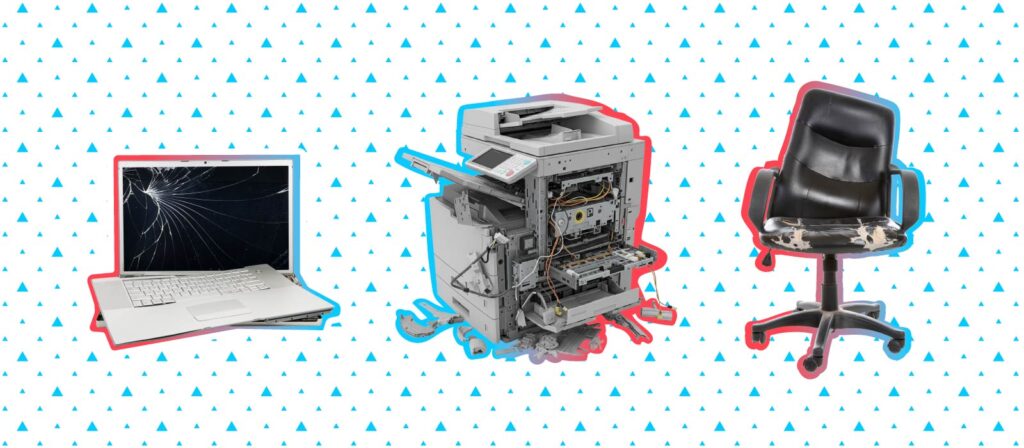
The facilities management (FM) landscape is evolving, and with the new year in full swing, there are plenty of trends to watch.
A recent industry report identified a few of the top facilities management trends of 2020 and how this evolving landscape will cause companies to adjust accordingly.
Let’s take a closer look at a few of these trends and how they’ll impact the industry as a whole.
IT and FM departments need to merge for smarter work
The facilities management team of a company is the foundation of operations as a whole. The FM team has the ability to capture and analyze data, and take those insights to make informed decisions to benefit the organization.
As facilities management as a whole becomes more digitized thanks to technology like sensors, software, and comprehensive analytics, coupled with work trends like telecommuting and flexible working, FM teams will need to work more closely with IT departments.
Traditionally, FM teams aren’t used to dealing with so much technology. Therefore, integrating these teams might pose a challenge due to work styles and expectations, but doing so will impact the success of these two teams and, ultimately, the organization as a whole.
Monitoring almost every aspect of a facility is possible, thanks to the development of sensors, digitization, and wireless communication. Due to the volume of information available as a result of these technological advances, a sophisticated analytics system can help make sense of the data. Merging the FM and IT departments is the best way to make the most of this information and take on an integrated facilities management approach.

Monetize unused space
To coincide with the “shrinking space” trend, organizations will need to find ways to monetize any unoccupied space. The solution might be to lease any unused space to other organizations to offset the cost of running the building.
New buildings have a unique opportunity to monetize unused space by constructing a “net-zero” building. The Edge building in Amsterdam is a great example of a space designed with sustainability and flexibility at its core. The building is owned by Deloitte and has roughly 2,500 employees working in the space, but less than half as many desks thanks to hot desking and remote working. What’s more, the Edge uses artificial intelligence (AI) to close off sections of the building when they’re not in use.
For older buildings, organizations or building owners can retrofit a space with a reliable building automation system (BAS), which makes tracking and reducing energy easier so as to reduce costs.
Employee experience and flexibility
The rise of remote and flexible work has a significant impact on the usage of building space. Empty space is expensive, so it’s important to utilize it effectively. However, with space utilization analytics, organizations can forecast the precise amount of space they’ll need, down to the square foot.
The commercial real estate market has responded to this need to downsize with flexible workspaces, also known as space as a service. Flexible workspaces give organizations the ability to choose the space and location that aligns best with their company goals and employee needs. This real estate movement has picked up such momentum that JLL predicts that flexible workspace will make up a third of the commercial real estate market by 2030.
So, where do facilities managers fit into this equation? Instead of focusing primarily on business operations, as traditionally done, FM teams will have to shift their attention to doing what they can to enhance the employee experience. An office environment that makes employees feel more connected while maintaining their flexibility is key, and facilities managers will have to help foster that culture.
An integrated workplace management system (IWMS) is an excellent way for organizations to make the most of their resources amidst these changes. An effective IWMS will serve as a way for companies to better understand “big picture” metrics like space usage over a period as well as day-to-day usages like viewing and booking conference rooms or desks.
Room and desk booking software
Room and desk booking software enables employees to see what workspaces are available in real time as well as reserve those spaces for a specified period.
This software is helpful in many ways, including:
- Helping FM teams better understand space usage
- Allowing employees to see open rooms and desks while in the office or on the go
- Creating a visual map of the office, including printer and medical safety equipment
Room and desk booking software improves overall space management and makes flexible work easier for all employees.
Remote work
For remote work to be successful, teams must be agile, create processes that work for them, and have communication expectations and boundaries in place. If your company isn’t already remote, it’s best to have processes in place and adjust accordingly so the transition will be seamless if remote working is introduced.
Also, technology like hot desking—or the ability to work from whatever desk is available rather than an assigned desk—is beneficial for remote teams because of the flexibility. It’s also great for busier times when more employees are in the office than usual.

Deferred maintenance will become obsolete
Deferred maintenance is when an organization chooses to delay maintenance to save money or adhere to a budget. While this may seem like a tempting solution to avoid costly maintenance repairs, it can actually be detrimental to a building’s integrity, depending on the issue. What’s worse is that deferred maintenance can warrant more repairs depending on if there is any damage. Not only can deferred maintenance affect an organization while it’s currently in a space, but it can also impact the resale value should the organization decide to move.
Maintenance updates—whether emergent or not—are both timely and costly, and putting them off can cause major issues for facilities teams. Because of this, companies are starting to find new sources of funding to make up for the laundry list of updates needed in their spaces. It makes more sense for companies to find ways to stay on top of maintenance requests rather than to be reactive. This approach is much more cost-effective and productive to protect facilities.
Predictive maintenance will become the leading repair strategy
Similar to deferred maintenance, both emergent and non-emergent maintenance are both costly and time consuming. A report from Limble CMMS found that the most common type of maintenance strategy is preventative. What’s more, the average time spent on scheduled maintenance is roughly 19 hours per week. That’s almost 1,000 hours of maintenance per year.
Tech giants like Google understand the benefits of predictive maintenance over reactive or preventative maintenance. Google has been testing an artificial intelligence (AI) program that understands how to adjust cooling systems for one of their data centers over the last few years, and finally granted it full control over the building’s cooling system as of 2018. The AI system used historical data like temperature, power, and pump speeds to learn how best to improve the building.
This is a prime example of the potential of AI and how it can work with a facilities team to create smarter work. AI helps with predictive maintenance by alerting facilities managers and building operations teams of issues or optimizing the system to benefit the facility using technology like sensors.

Outsourcing FM components will continue
An organization can only do so much in terms of accommodating every single demand of the evolving facilities industry. Technology is changing so quickly that traditional FMs can struggle to keep up, and an integrated facilities management approach can make all the difference.
But to stay competitive, organizations must be able to attract new talent, keep current talent, and maintain high employee engagement. More organizations are outsourcing these tasks to make sure they are executed properly.
Outsourcing these components is a cost-effective solution that ensures the organization is getting precisely what it needs and when it needs it. In fact, outsourced FM services are growing at such a rate that they’re expected to exceed $2 trillion by 2025.

Building automation systems improve operations
The Internet of Things (IoT) has impacted several areas of our lives—from how we grocery shop to how we perform at work. BAS are one such technology that can monitor HVAC, lighting, security, and more.
FMs can use data collected by the BAS to make energy improvements in real time. With an effective BAS, facilities teams can leverage insights from building data that provides the information to make smarter decisions for their facility.
A BAS can also help with predictive maintenance and the prioritization of repairs. FMs can remotely control different components of the building and make adjustments based on data that will cut costs.
Data is changing the way FM teams operate
Facilities management isn’t moving towards being an industry that is technologically integrated. It already is one. The question is: how can you make these trends work for your organization?
Unlike other trends, these are ones that are moving organizations towards being more efficient, better at making decisions, and more integrated.
See how OfficeSpace Software can streamline your workplace management and employee connectivity.
Contact us today, and our team will help you find the solution that’s right for you.
Photo Credits: Gerd Altmann, Cytonn Photography, Pexels, Andrea Piacquadio, Pixabay



